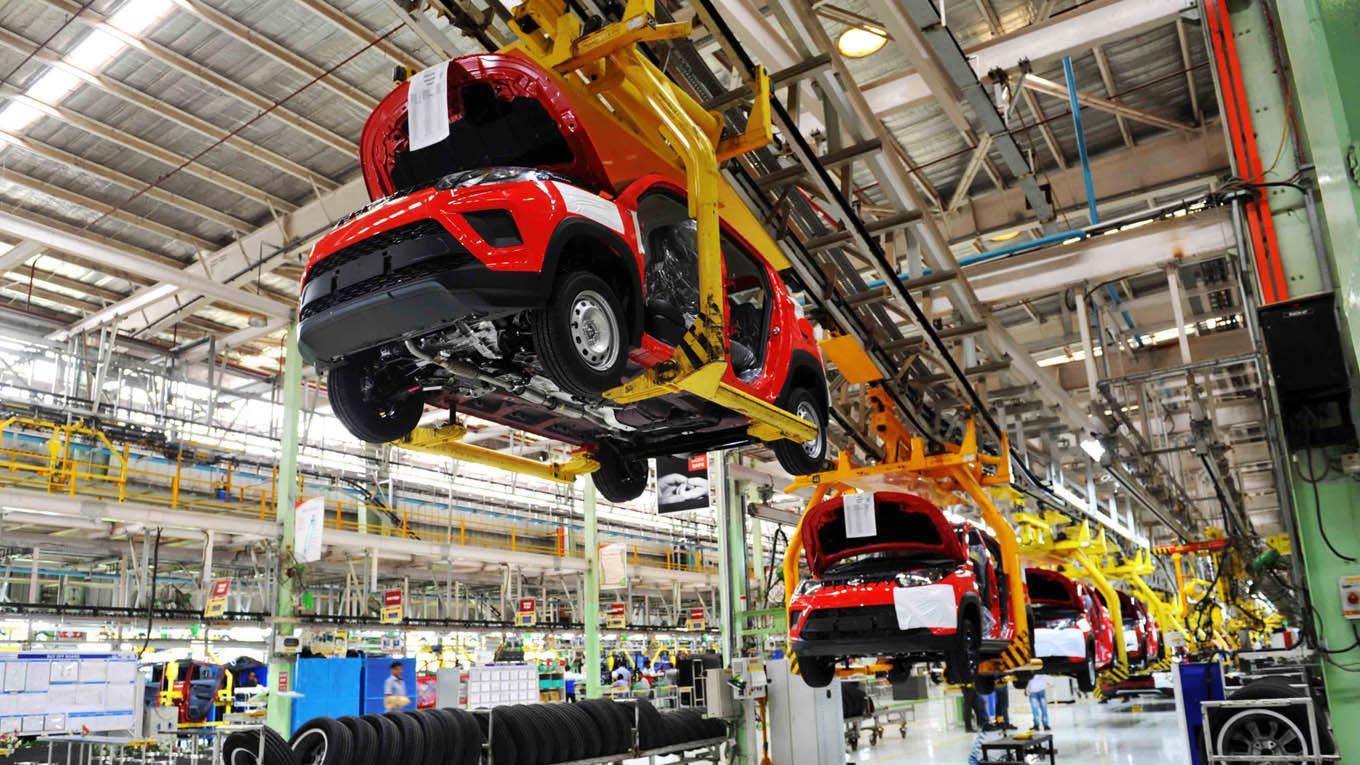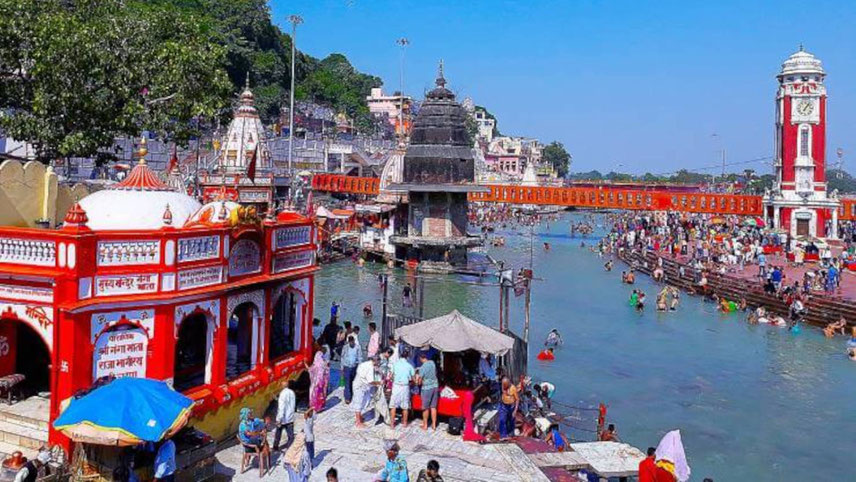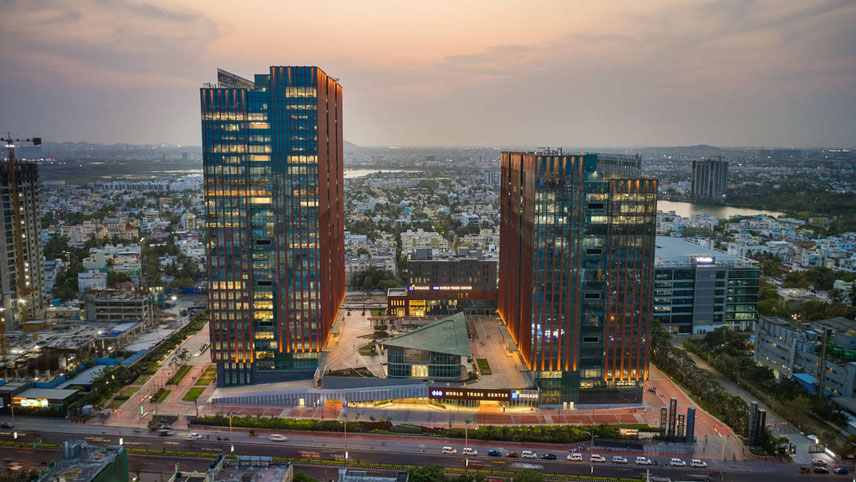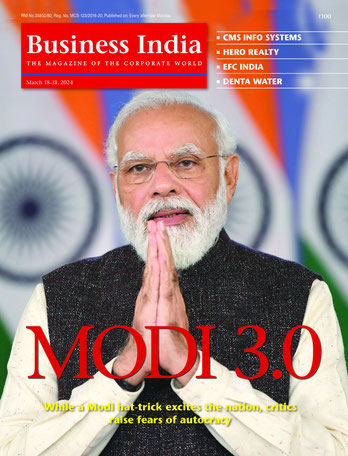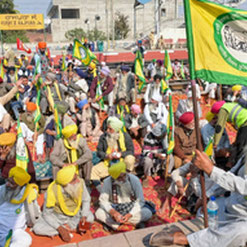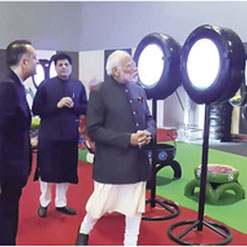-

Subramanian: cautiously optimistic
The Modi government’s original position, articulated by PM in his address to the nation on 24 March, was that, if the situation is not brought under control in the next three weeks (21 days), the country could go back 21 years and that several families would be devastated forever. He urged the people to do just one thing in the next 21 days – to stay inside their homes.
Today, in retrospect, many feel that the blunt strategy of simply locking down the nation should have been fine-tuned. Situations like the plight of millions of stranded migrant workers, who overnight found themselves without jobs, and the total disruption of supply chains could have been avoided.
Critics have said that the stringent lockdowns failed to flatten – or even slightly bend – the country’s corona-virus curve. While the government has disputed this, it has few answers or for that matter remedies for the economic consequences of Covid-19, which are proving to be even greater than the healthcare challenges that arose in the country.
Save for sectors like telecom, financial services and healthcare, which reported limited or almost no impact due to the pandemic and gainers like online media, online education and e-commerce, which topped the charts in terms of sales, the virus halted supply chains and revenue streams alike with a ferocity never seen before.
Is -7.5 per cent good enough?
The lockdown hit at the heart of our economic strength – the so-called demographic dividend. According to the Centre for Monitoring Indian Economy (CMIE), in April 2020, as many as 27 million youth between 20 and 30 years of age lost their jobs. The effects are all too visible today. India’s economy shrank by 23.9 per cent in the first quarter and 7.5 per cent in the second. The GDP contraction reading for the second quarter of the current financial year looks better than that projected 8.6 per cent in a state-of-the-economy review presented earlier this month by the Reserve Bank of India or the economists’ forecasts of 8.8 per cent in a poll by news agency Reuters.
There is some talk of a rebound, which is premature (see box: Should we celebrate?). Consumption demand and investments which propel an economy continue to remain tepid. The fact remains that India has entered into a ‘technical recession.’ The term technical recession is used when an economy contracts for two consecutive quarters, a situation which China deftly avoided. As things stand, the economy has shrunk by 15.3 per cent during the first half of 2020-21: it is unlikely to hit positive territory in the third or fourth quarters. The International Monetary Fund projects India’s economy will shrink 10.3 per cent this year.
Even top government advisors of the government advise caution. “We should be cautiously optimistic and the caution is warranted because economic impact is primarily due to the pandemic,” says Krishnamurthy Subramanian, Chief Economic Advisor to the government. “Till the pandemic does not go away, some of the sectors that are affected by social distancing will continue to experience demand slump.”
-
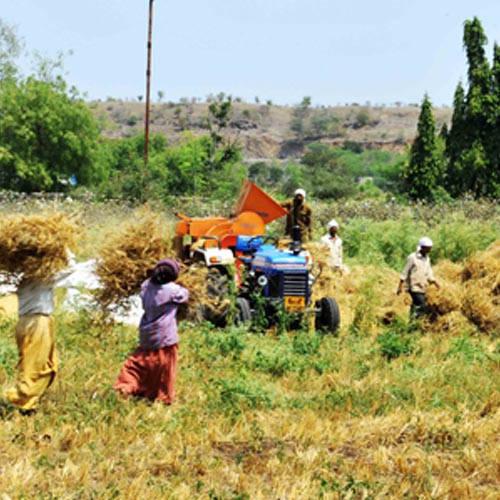
Was the farm sector a bright spot? Studies expose its darker side; Photo: Sanjay Borade
Our problems are deeper. The economy was facing a severe demand crunch even before the pandemic. Despite a fall in the trade deficit, between April and December 2019, the growth in government-financed consumption was 11.2 per cent, while overall GDP had grown only 4.6 per cent. The economic slowdown was sharp across the sectors – and the lowest since the beginning of the decade. So, India had been in slow growth mode, which has only deepened because of the pandemic.
As for saving lives, both Prime Minister Modi and a slew of top government spokesmen claim that India is in a better position than other countries because of the successive lockdowns. Besides, India’s recovery rate is high and active cases are significantly falling. On the destabilising effect of the pandemic and where it stands on the goal of becoming a $5 trillion economy by 2024, Modi has asserted that India is optimistic of its future and reaching the $5 trillion target. “So what if we could not move at the desired pace this year due to the pandemic! We will try and run faster in the next year to make up for the loss.”
However, the knotty part of the saga is that the economy has got caught in a vicious circle. Retail inflation has surged to a 77-month high of 7.6 per cent led by a spurt in food prices. Inflation management has been a key success of the Modi administration so far. This has now been undermined by the supply disruption and the lockdown. For 13 month in a row, retail inflation has breached the RBI’s 4 per cent inflation target and for seven months, the 6 per cent tolerance level.
Prices are shooting up at a time when many people have lost their jobs or taken a pay-cut. Data from CMIE shows a new trend: general unemployment (people who are seeking work but can’t find it) has reduced. This is not because people have found work again. On the contrary, people have withdrawn from the job market because of the slowdown and a sense of hopelessness.
As for factory output, a marker of revival, the Index of Industrial Production became positive only in September after falling for six months. This suggests that the market will take a long time to recover its loss, so hiring will remain subdued. The retail and recreation sector is yet to recover from the disruption in demand and supply.
The sector (restaurants, cafés, shopping centres, theme parks, museums, libraries and cinemas) is considered as the most important source of livelihood outside of agriculture. Business, restaurants and hotels have the single largest share in employment after farming, as data from the Periodic Labour Force Survey 2018-19 of the National Sample Survey Office shows. In most of the cities across India, retail and recreation sector creates more than one in five jobs.
Transport services, another economic multiplier which employs millions, stood paralysed during the lockdown. As domestic and international air travel came to a halt, the airlines were badly hit. The Railways suspended regular services till 12 August and ran only Shramik Specials to ferry the migrant labour back home. The Railways is looking at just 15 per cent of the passenger segment revenue compared to Rs50,000 crore last year, according to V.K. Yadav, chairman of the railway board. The loss on account of freight will be even more.
-

Ramakumar: farm sector revival is a tall claim
Mixed farm story
When Covid-19 broke out, the government’s hopes were pinned on agriculture, which remained the bright spot, supported by a good monsoon season and subsidised inputs. Four major arguments were offered in this connection. First, India’s food grain production in 2019-20 was 3.7 per cent higher than in 2018-19. The procurement of rabi wheat in 2020-21 was 12.6 per cent higher than in 2019-20. These indicate, it is argued, resilience in the agricultural sector. Second, food inflation in the Q1 of 2020-21, at 9.2 per cent, was higher than in the previous year due to ‘sustained demand for food’. This shows a shift of terms of trade in favour of agriculture.
Third, the area under kharif sowing in 2020-21 was 14 per cent higher than in 2019-20. Higher kharif sowing was accompanied by higher tractor and fertilizer sales, which bodes well for economic recovery. Fourth, the government’s economic package for agriculture – as part of the R20 lakh crore Atmanirbhar Bharat package — would further position agriculture as the engine of revival.
During the lockdown, many state governments led by Punjab put in considerable efforts to ensure that procurement did not suffer. As a result, procurement of rabi wheat was higher in 2020-21. However, as R. Ramakumar, NABARD chair professor, TISS, Mumbai, points out in a perceptive analysis, this claim hides more than it reveals. As per official data, only 13.5 per cent of paddy farmers and 16.2 per cent of wheat farmers in India sell their harvest to a procurement agency at an assured Minimum Support Price (MSP).
The rest sell their output to private traders at prices lower than MSP. One should, then, be looking not at procurement but market arrivals. It now turns out that the market arrivals of all the 15 crops were lower in 2020 than in 2019. It was only in paddy, lentil, tomato and banana that market arrivals in 2020 constituted more than 75 per cent of market arrivals in 2019. In wheat, barley, potato, cauliflower, cabbage and lady’s finger, market arrivals in 2020 were only 50-75 per cent of the market arrivals in 2019. And, for gram, pigeon pea, onion, peas and mango, market arrivals in 2020 were less than half of market arrivals in 2019. In wheat, the most important rabi crop, only 61.6 per cent of the arrivals in 2019 was recorded in 2020.
Loss of farm markets
Thus, the most important problem faced by farmers during the lockdown was the loss of markets, stemming from the disruption in supply chains, closure of mandis and a fall in consumer food demand. Farmers suffered major loss of incomes, and higher procurement was hardly alleviating. In addition, there were major losses in the milk, meat and poultry sectors; industry associations estimate the total loss for the poultry industry at Rs25,000 crore.
-

Nayar: restrictions will harm recovery
Ramakumar points out that inflation rates estimated by using consumer price indices are not representative of farmer’s prices. Inflation was largely due to disruptions in supply chains and rise in trader margins. Examining the wholesale market prices for 15 agricultural commodities between 15 March and 30 June 2020, he finds that prices of most crops declined.
For example, average paddy prices were about Rs1,730 per quintal on 23 March, but Rs1,691 per quintal on 30 June. Average wheat prices were Rs2,045 per quintal on 1 April, but Rs1,865 per quintal on 30 June. The dark side of higher rural inflation in India is that small and marginal farmers are not net sellers, but net buyers of food. So, it was not just that farmer’s prices fell; most were also forced to pay more for food purchases. Rural households reduced food purchases during the lockdown, belying the claim that higher rural inflation benefited farmers, and that it was due to higher food demand.
There is no surprise in the growth of kharif sowings in 2020. Given that rabi incomes fell during the lockdown, many rural households may have returned to farming or intensified farming for food- and income-security. Lakhs of migrant workers returned to their villages from urban areas. They too may have taken up agriculture in previously fallow or uncultivated lands. Data on monthly employment released by the CMIE show that the number of persons employed as ‘farmers’ in June and July 2019 were 112 million and 114 million respectively. But, in June and July 2020, these numbers rose to 130 million and 126 million respectively.
These are indicators of distress, not prosperity. It is no cause for celebration also because the rural unemployment rates rose sharply in 2020 – to 22.8 per cent (April), 21.1 per cent (May) and 9.5 per cent (June). Even in August 2020, rural unemployment rates were higher than in February 2020 or August 2019. Agriculture contributes only about 15 per cent to gross value added (GVA). Thus, even if agriculture grows by 4 per cent, it is likely to contribute only 0.6 percentage points to GVA growth.
To contribute a full one percentage point to GVA growth, agriculture will have to grow by 6 per cent, which is unlikely in 2020-21. This is not to deny a potential rise in demand from higher rabi procurement, higher kharif sowing and flow of cheap credit, which together appear to have resulted in higher purchase of tractors and fertilizers. But the counteracting tendencies in rural areas – lower crop prices, lower market arrivals and higher unemployment – would overwhelm these ‘green shoots’.
Rural expectations were high when the Atmanirbhar Bharat package was announced. However, the details were disappointing. Total fresh spending for agriculture in the package is a trickle: less than Rs5,000 crore. Old schemes already included in the past Budgets and announcements with no financial outgo banks were rolled out.
India and its neighbours
In tackling the economic consequences of the pandemic, India does not come out in a good light, even when compared with our smaller, poorer south Asian neighbours. Our neighbours are expected to log more muted downturns of 4.6 per cent in Sri Lanka and 0.4 per cent in Pakistan. Bangladesh is the only country expected to grow. Of course, India’s population of 1.4 billion, three times the combined population of Pakistan, Sri Lanka and Bangladesh, is sometimes a drag on its resources. Yet, the fact also remains that it has reported more than 10 times as many cases.
-
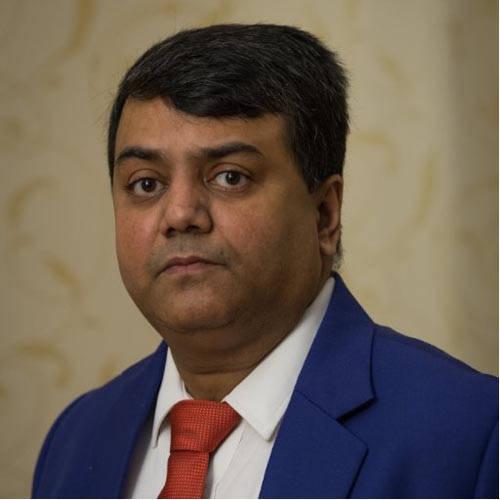
Ghosh: economy has suffered, scarring remains
Pakistan is derided as a basket case when it comes to governance. Yet, its handling of the pandemic has not been so poor. Instead of a sweeping, sudden national lockdown, Pakistan adopted a strategy of localised lockdown, drawing on healthcare networks it has in place for the battle against polio. It used the army’s surveillance apparatus to track and trace infected persons. Pakistan even managed to bend the curve down to a steady 1,450 daily cases (from 6,000); though the recent trends in the country do not seem as promising as it once was. In Bangladesh, the authorities began screening as early as in January and made use of data to understand general trends and take steps.
Meanwhile, the Centre and the RBI have announced a series of steps to boost liquidity and improve market sentiment, including most recently LTC cash vouchers and interest-free festival advances for government employees, among other initiatives. There was hope that all the measures will trigger a gradual revival in spending and economic activity. Multiple fast-paced indicators, including GST collections, have been showing a sharp recovery since October, which has also led many analysts to revise their overall GDP forecasts for the fiscal.
However, as domestic ratings agency ICRA points out, the recent signs of revival could be the result of the pent-up demand and favourable base and may not sustain going ahead post-festive period. Pointedly, ICRA’s principal economist Aditi Nayar warns that the re-imposition of restrictions in one or more states on account of a fresh surge in Covid-19 infections, may temper the momentum of recovery in the coming months.
Indeed, it is the fear of the fresh surge in infections during winter months that is keeping economists awake. The State Bank of India’s economic research arm points out that the economy has ‘suffered and scarring remains’, but added that various economic indicators point to continuous improvement and the numbers for the October-December quarter are expected to be even better.
“Future prognosis will depend on two things – the shape of the recovery from Covid infections and how fast the vaccine is rolled out,” said a note dated 19 November, authored by Soumya Kanti Ghosh, Group Chief Economic Advisor, SBI. “The current trends of Covid-19 infection show that Covid cases in India peaked in September. With Unlock 5.0 and festival season till December end, the chances of a possible second wave will increase”.
Besides, the rising Covid afflictions in the hinterland because of the relatively poor health infrastructure should be a cause of serious worry as most of them go unreported. They can cause wider disruption to economic activity than it appears. With rural incomes remaining depressed, the economy will be pushed further into a vicious cycle of poor demand, low prices and low growth.
The current farm situation and the ongoing farmers’ agitation against the new farm laws should make the government decisively intervene in rural India with a substantial fiscal stimulus. As for the general economic recovery, the momentum can only be sustained by government spending, monetary policy tailwinds and, of course, the vaccine. The earlier the better.
-
For 13 month in a row, retail inflation has breached the RBI’s 4 per cent inflation target and for seven months, the 6 per cent tolerance level
Should we celebrate?
The time to uncork the bubbly is simply not here yet. Economists say that it was largely a combination of pent-up demand, rural push and festive season that has underpinned what is being described as a recovery of sorts.
“The recovery will need to be carefully monitored due to lingering risks,” says Shashank Mendiratta of IBM. “After an uptick in early November, high frequency indicators are beginning to show fatigue. Possibility of dwindling pent-up demand and rising infections could limit broader gains.”
Kunal Kundu of Societe Generale also talks of signs of emerging fatigue in recent demand uptick and the second wave of infection already impacting economic activity. This could result in a much weaker third-quarter activity.
Subhash Chandra Garg, former finance secretary, who has been arguing that the premature hard lockdown was responsible for India’s economic plunge, has questioned the numbers. “It is understandable to feel better at lower contraction at 7.5 per cent in Q2,” says Garg on micro-blogging site Twitter. “Numbers, however, don’t add up. Low gross fixed capital formation contraction at only 7.3 per cent – despite less new projects, ongoing projects being put on hold and government capex also down – is inexplicable. So is manufacturing growth despite demand slowdown”.
